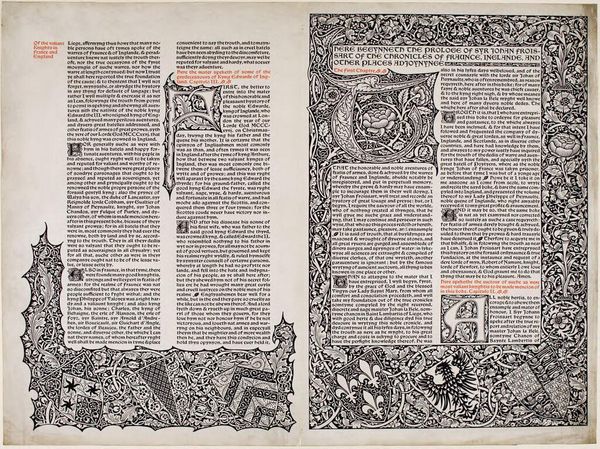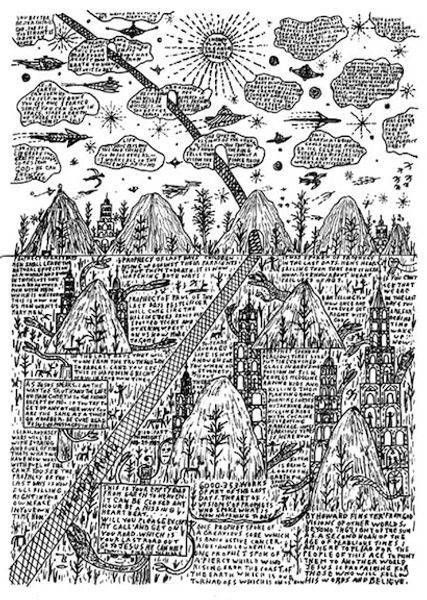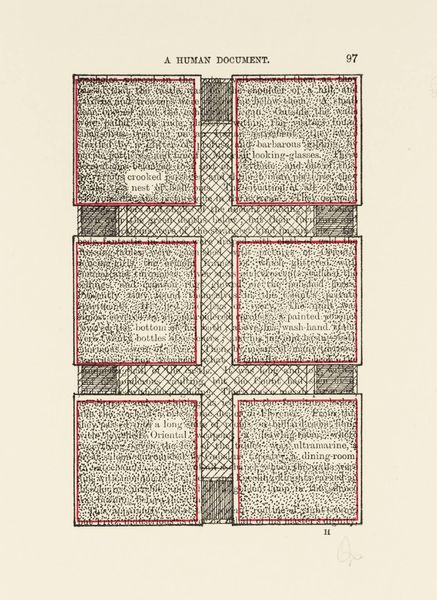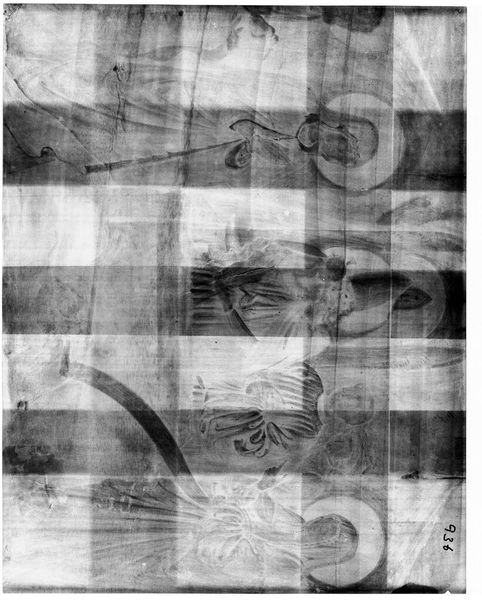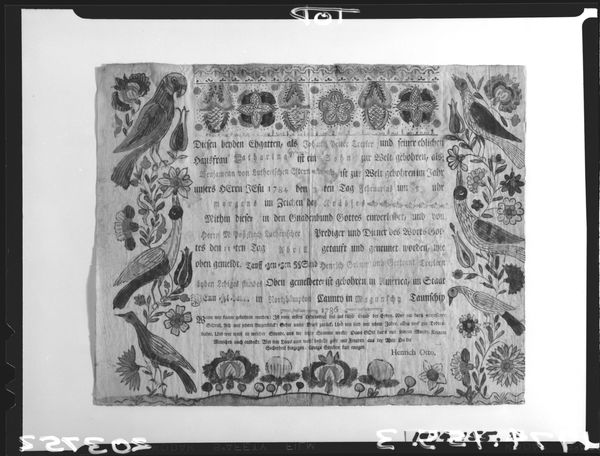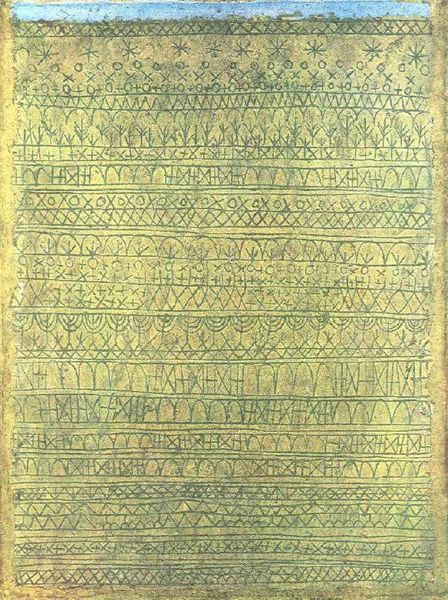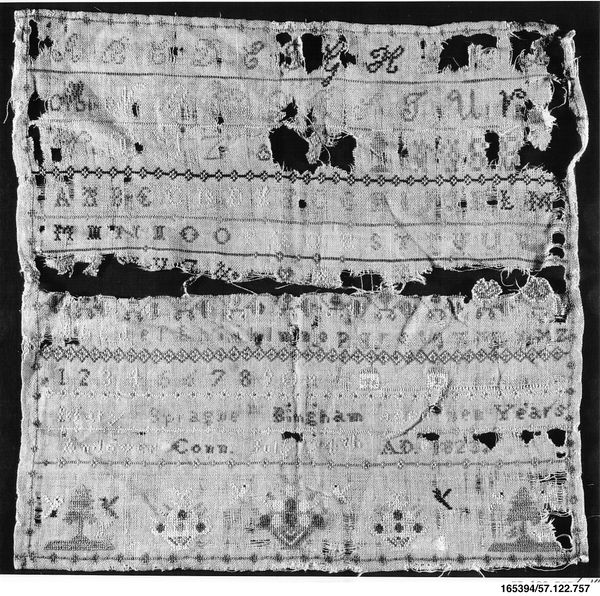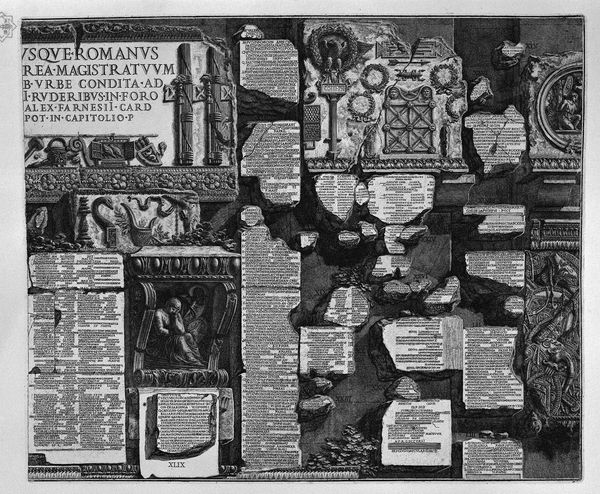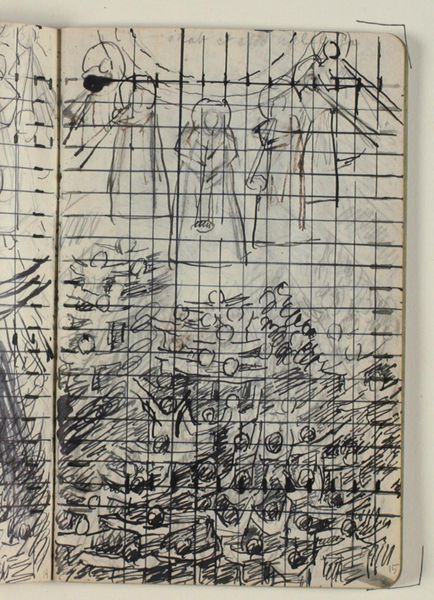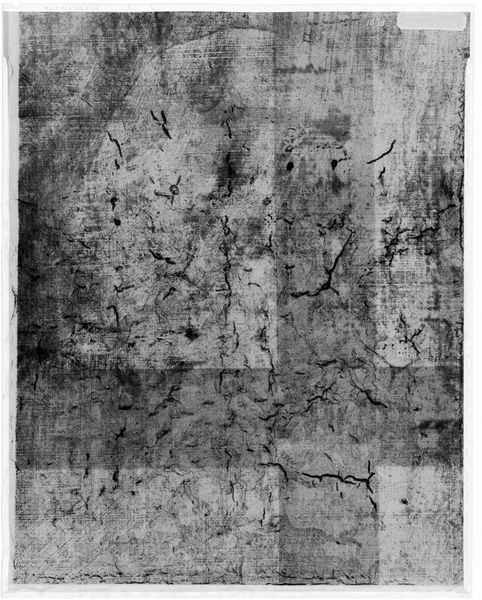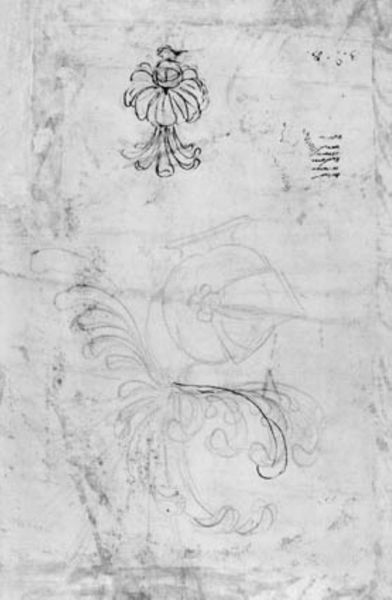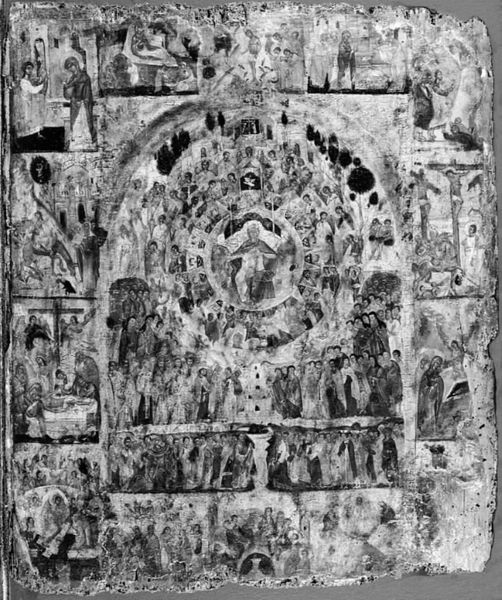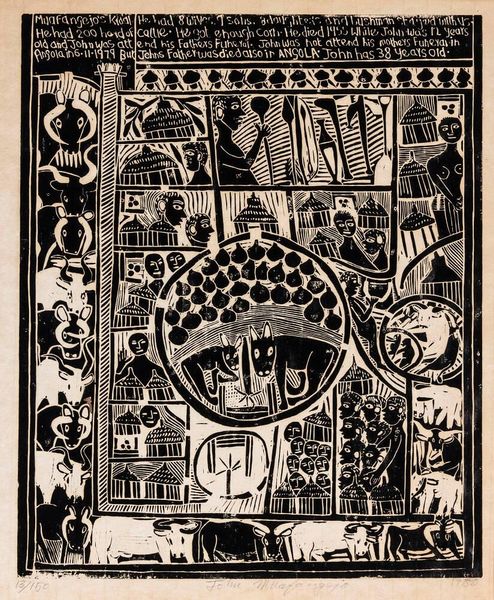
drawing, fibre-art, collage, textile, paper, ink
#
drawing
#
fibre-art
#
collage
#
narrative-art
#
textile
#
paper
#
text
#
ink
#
hand drawn
#
folk-art
Dimensions: 241.3 × 185.3 cm (95 × 73 in.)
Copyright: Public Domain
Editor: This piece, "Cover (Needlework)," from somewhere between 1850 and 1900 and housed at The Art Institute of Chicago, feels intensely personal. The textile combines drawing, fibre art, and collage into a unique visual language filled with religious texts and imagery. What do you see in this work, viewed through a historical lens? Curator: What immediately strikes me is the public role that such "folk art" fulfilled. The maker, Susanna Lewis, engaged with powerful socio-religious discourses, almost sermonizing through stitching. Can you imagine the cultural context in which this piece would have been created and displayed? Editor: I'm guessing at home? Perhaps displayed in a personal, domestic setting, somewhere private. A personal expression of faith that was part of her everyday experience. Curator: Precisely. The medium of needlework itself speaks to domesticity and the role of women in the 19th century. It served as a crucial mode of conveying personal and communal narratives before mass media's advent. The incorporation of Biblical texts, alongside seemingly original compositions, suggests a powerful desire to publicly interpret religious doctrine within the framework of a deeply pious existence. Editor: So, in a way, even a domestic piece like this challenged existing socio-religious interpretations by expressing its creator’s personal beliefs. A quiet revolution playing out in the home? Curator: Exactly! Needlework offered a permissible outlet for creative and intellectual expression within societal norms that often restricted women's public roles. It embodies both artistic and political power. Did anything catch your eye in terms of composition or materiality? Editor: I noticed how it’s pieced together, almost like a collage. Very busy, like multiple ideas competing for space. Thanks, I hadn't thought of this as Susanna entering a dialogue with religion and societal expectations of her gender. Curator: And by leaving her name Susanna Lewis, at the bottom of the piece, Susanna, in her own way, made herself both artist and commentator.
Comments
No comments
Be the first to comment and join the conversation on the ultimate creative platform.
